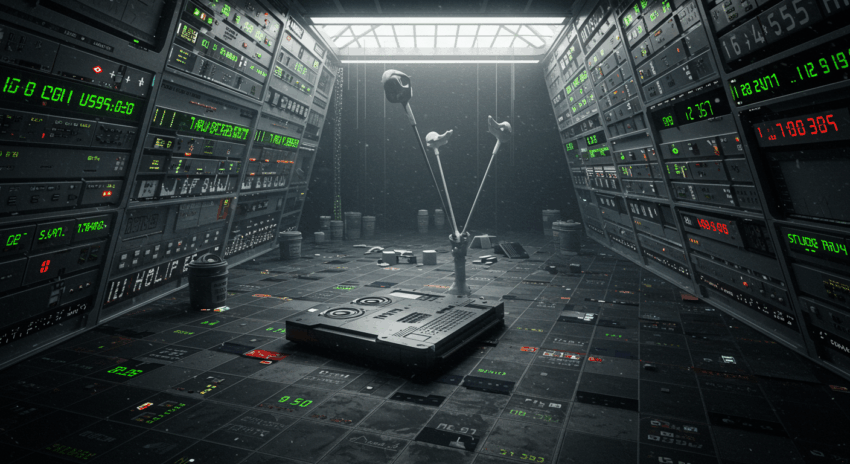The stunning news of Nvidia becoming the most valuable company in the world has sent shockwaves through global financial markets, marking a pivotal moment in the technology and investment landscape. In a historic shift, the chipmaker has surpassed titans like Microsoft and Apple, and this isn’t just a headline for Wall Street traders. This development has tangible implications for the broader economy, technological innovation, and even your personal savings. Understanding this event is crucial for anyone interested in the future of finance and technology.
This article will deconstruct how Nvidia achieved this monumental milestone, what is powering its incredible growth, and what it signals for the future. We will explore the core concepts in a clear, easy-to-understand way, helping you grasp the significance of this new era in the global economy.
From Gaming Graphics to AI Dominance: The Story of Nvidia
For many years, Nvidia was a brand primarily associated with the world of video games. The company built its reputation on creating high-performance Graphics Processing Units, or GPUs. These are specialized electronic circuits designed to rapidly manipulate and alter memory to accelerate the creation of images in a frame buffer intended for output to a display device. In simpler terms, they were the powerful engines that made video games look incredibly realistic and run smoothly.
However, the underlying architecture of these GPUs made them uniquely suited for another, far more transformative task: parallel processing. This is the ability to perform many complex calculations simultaneously. While this was great for rendering complex 3D worlds in games, researchers discovered it was also the perfect tool for training artificial intelligence models. Developing AI requires sifting through colossal amounts of data and running countless calculations at once, a task for which Nvidia’s GPUs were perfectly designed.
This realization was the spark that lit the fuse. As the AI boom ignited, driven by advancements like ChatGPT and other large language models, the demand for Nvidia’s chips exploded. The company effectively went from selling high-end tools for a niche entertainment market to providing the fundamental building blocks for what many are calling the next industrial revolution. Every major technology company, from Google and Meta to Amazon and Microsoft, is now in a race to build more powerful AI, and they all need Nvidia’s hardware to do it.
- The Data Points: To put this in perspective, Nvidia’s stock has seen a meteoric rise. In mid-2024, the company’s value surged past $3.3 trillion.
- Market Capitalization Explained: This enormous number is a company’s market capitalization. It’s a simple but powerful metric calculated by multiplying the current stock price by the total number of outstanding shares. It represents the total dollar value of a company’s shares and is the standard measure of how much a company is “worth” in the public markets.
Nvidia’s ascent is not just about having the right product at the right time. The company has built a formidable competitive advantage, often called an “economic moat”. This includes not only its superior chip design but also its proprietary software platform, CUDA, which developers use to build AI applications. This integrated ecosystem of hardware and software makes it very difficult for competitors to catch up, cementing Nvidia’s position as the undisputed leader.

What This Means for the Broader Economy and You
When a single company reaches such a colossal valuation, its impact extends far beyond its own balance sheet. Nvidia’s prominence is a powerful symbol of the economic shift towards an AI-driven world. Sectors from healthcare and manufacturing to transportation and finance are being reshaped by this technology, and Nvidia is at the very center of it all.
Market Concentration and Your Investments
One of the most significant effects is on the stock market itself. Nvidia is part of a group of technology behemoths, sometimes called the “Magnificent Seven,” that have been responsible for a large portion of the stock market’s recent gains. This is known as market concentration.
What does this mean for you? If you have a retirement account like a 401(k) or an IRA, you almost certainly have exposure to Nvidia, even if you never bought the stock directly. Many people invest in index funds or ETFs that track the S&P 500. Because the S&P 500 is market-cap weighted, companies with the largest valuations, like Nvidia, make up a larger percentage of the index. Consequently, Nvidia’s stellar performance has directly boosted the retirement savings of millions of people. The flip side is that this concentration also introduces risk; if these top companies were to falter, it would have a disproportionately large negative impact on the market.
A Bubble or Sustainable Growth?
The rapid, eye-watering ascent of Nvidia’s stock has naturally led to a pressing question: is this a speculative bubble, or is it a sustainable reflection of true value?
The “Bubble” Perspective: Skeptics point to historical parallels, such as the dot-com bubble of the late 1990s. During that period, company valuations became detached from their actual revenues or profits, driven instead by hype and speculation about the future of the internet. The rapid price increase and widespread investor euphoria surrounding AI stocks today share some characteristics with that era. A significant market correction could occur if the growth of AI fails to meet these incredibly high expectations.
The “Sustainable Growth” Perspective: On the other hand, there is a strong case for sustainability. Unlike many dot-com era companies, Nvidia is generating staggering and very real profits. Its revenue and earnings have grown at an explosive rate, providing a solid fundamental basis for its valuation. The demand for its AI chips is not theoretical; it is concrete, massive, and comes from the world’s largest and most profitable companies. Proponents argue that we are only in the early innings of the AI revolution, and Nvidia is poised to continue capitalizing on this multi-decade trend.
Ultimately, only time will tell. For the average investor, the key takeaway is the timeless principle of diversification and maintaining a long-term perspective. Chasing skyrocketing stocks can be a dangerous game, but understanding the forces driving these market shifts is essential for sound financial planning.
Frequently Asked Questions (FAQ)
- What are GPUs and why are they so important for Artificial Intelligence?
- GPUs, or Graphics Processing Units, are specialized processors that can handle many tasks simultaneously (parallel processing). While originally designed for rendering video game graphics, this capability makes them perfect for the intense computational demands of training AI models. AI development requires processing vast datasets and performing millions of calculations at once, and GPUs can do this far more efficiently than traditional CPUs (Central Processing Units). They are essentially the engines powering the entire AI industry.
- If I don’t own Nvidia stock, does its performance still affect my finances?
- Yes, it almost certainly does. If you participate in a company-sponsored retirement plan (like a 401k) or own common investment products like index funds or mutual funds that track the S&P 500, you have indirect exposure to Nvidia. Because these funds are often weighted by market capitalization, Nvidia’s massive size means its performance has a significant impact on the fund’s overall return, directly affecting the value of your portfolio.



